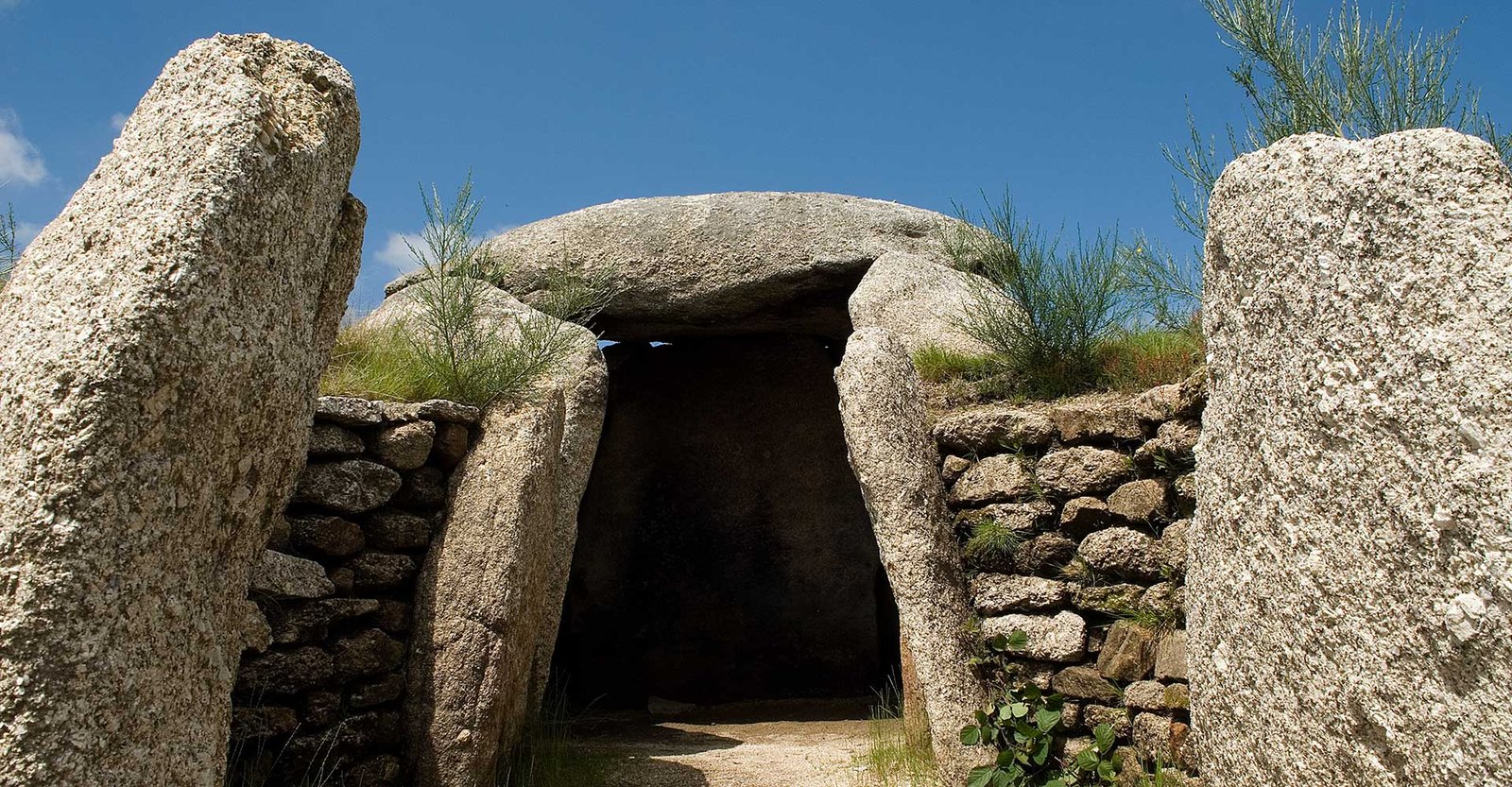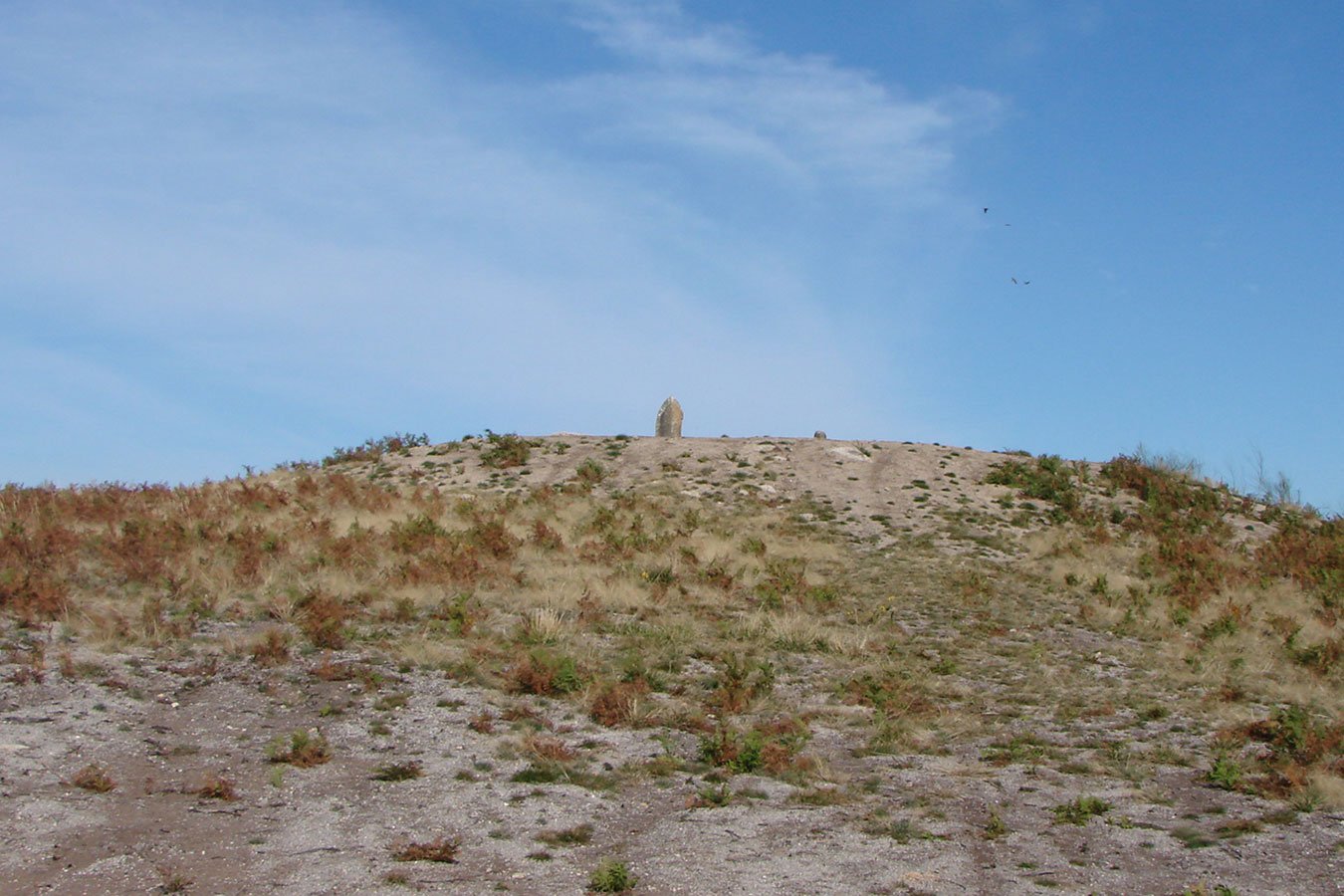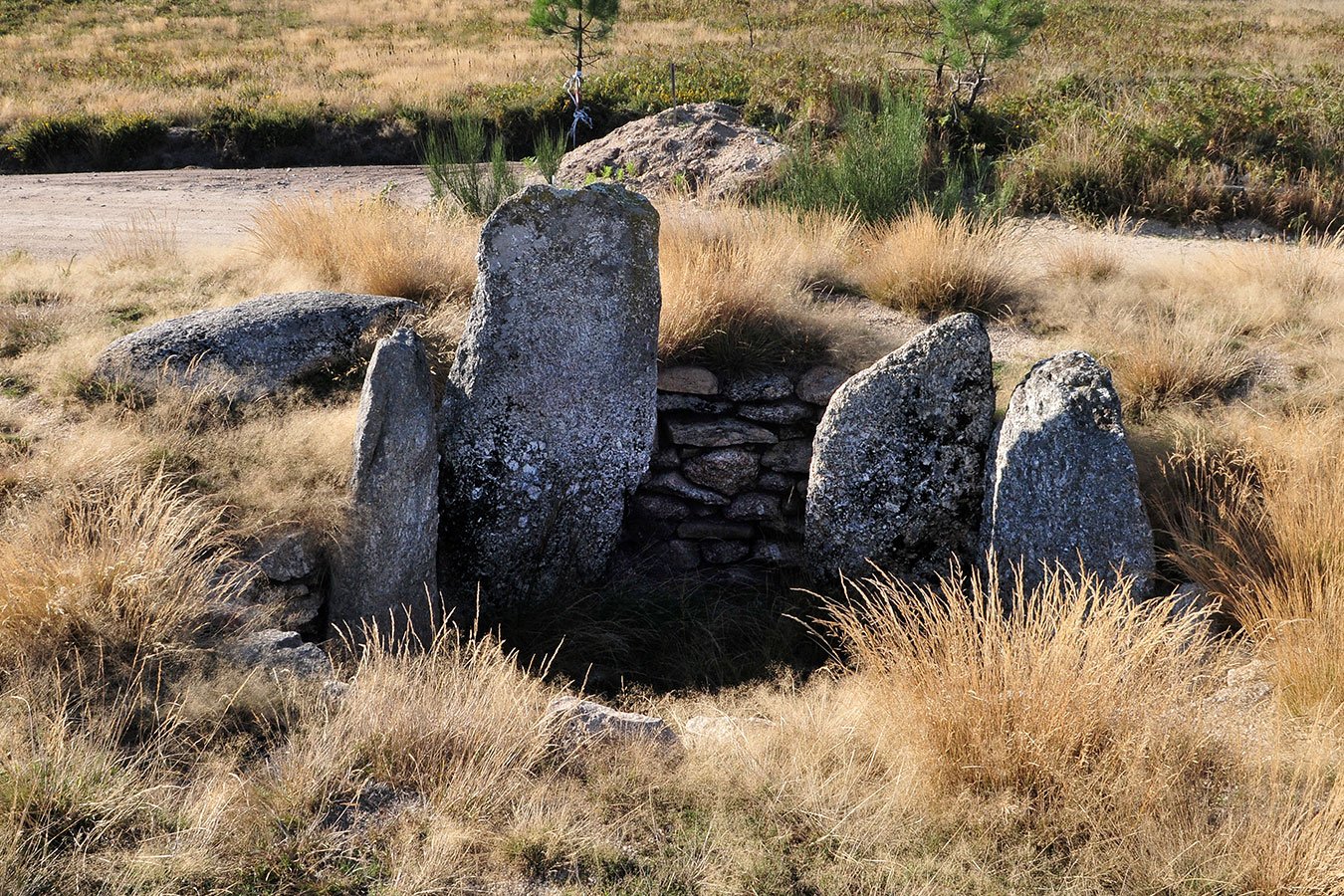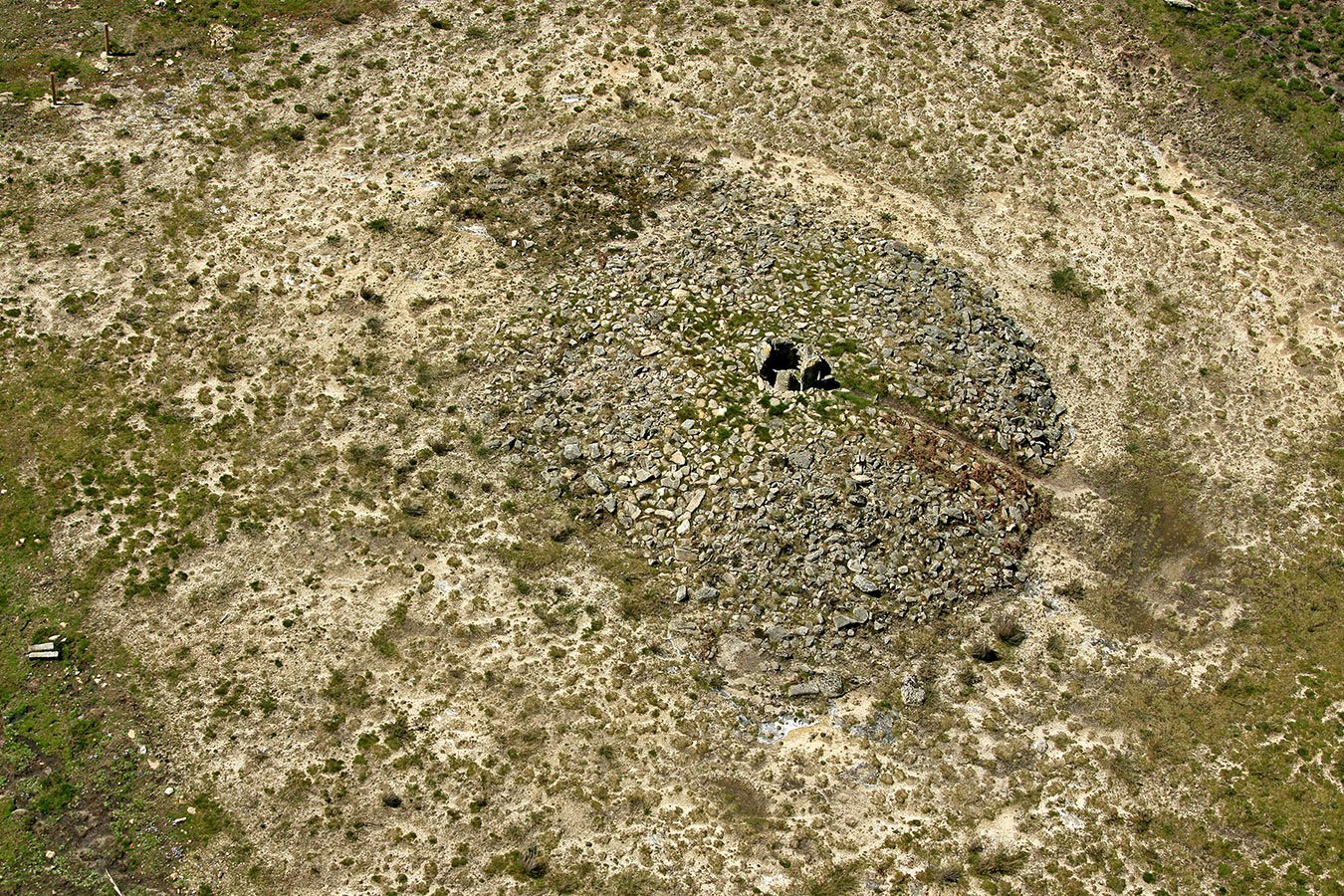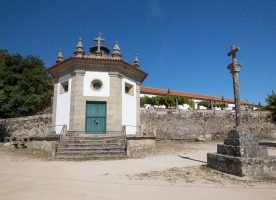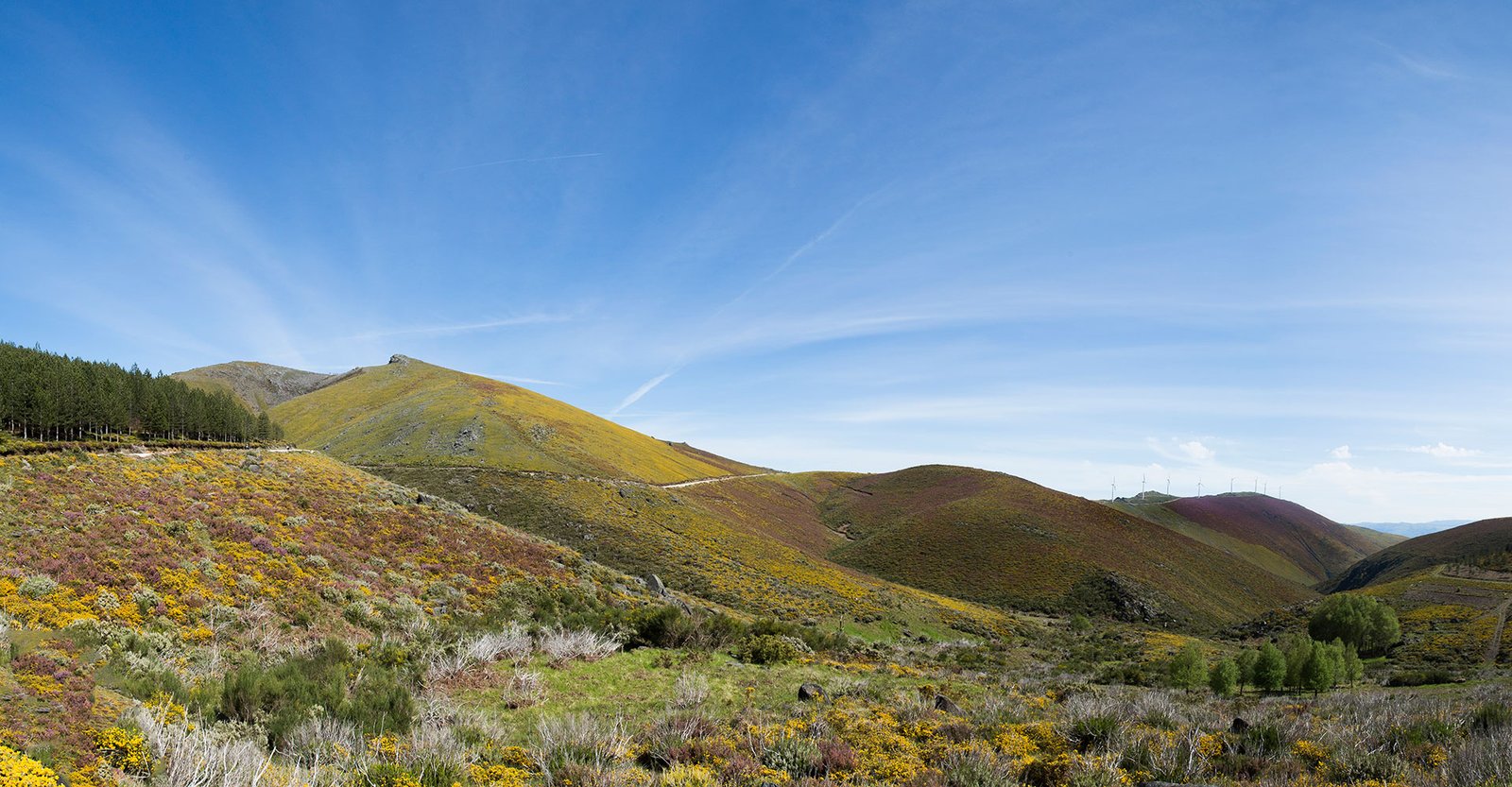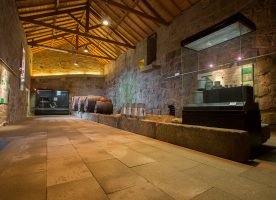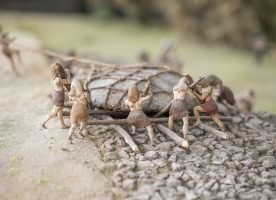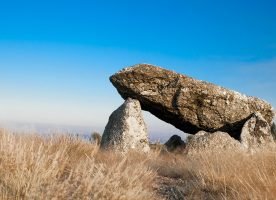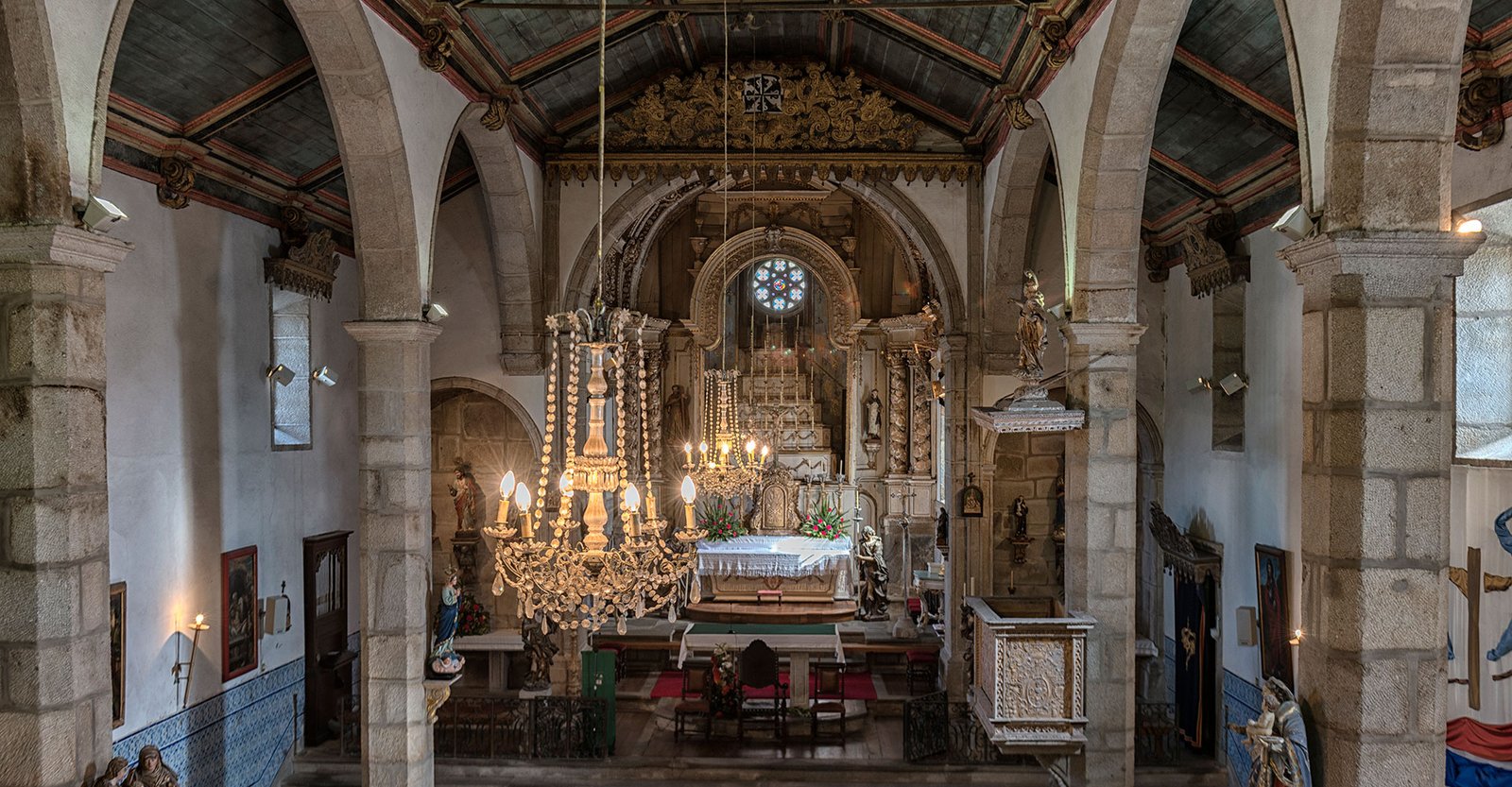Among this territory’s first remains of human occupation, the quantity, diversity and visibility of burial mounds stands out, as they are regarded as a landmark of the Aboboreira mountains. The Aboboreira and its scenic landscape is enriched by the quantity, diversity and visibility of its burial mounds, as they prevail as the most noteworthy remains from human occupation in the territory.
Large dolmen, made up of nine stanchions, with an access corridor that distinguishes itself from the funeral chamber in plan and elevation, and which originally was composed of three stalks on each side. In its interior are still ...
Half-sized dolmen, probably closed, and amputated by the road, as well as the mamoa that covered it to the east. The slab found on the roof was found about 30m northeast of the monument, serving as a ...
Large monument, built on a natural elevation, standing out strongly in the landscape. It is an open dolmen, without corridor, with an elongated polygonal shape, and composed of seven supports. Unfortunately,...
The first monument excavated in the Serra da Aboboreira, in 1978, within the scope of the Archaeological Field. Medium sized dolmen, with a small entrance to the east, marked by a threshold. It only retains four of its seven pillars ...
The monument is located in the center of a large hill, on a granite outcrop, standing out in the landscape. Dolmen closed but with a small "window" type opening to the east. It was decided to keep the lytic cuirass that covered the ...
The monument is located in the center of a large hill, on a granite outcrop, standing out in the landscape. The mamoa contains an enclosed dolmen, with a small funerary chamber. The stone coating of the mamoa (armor ...
